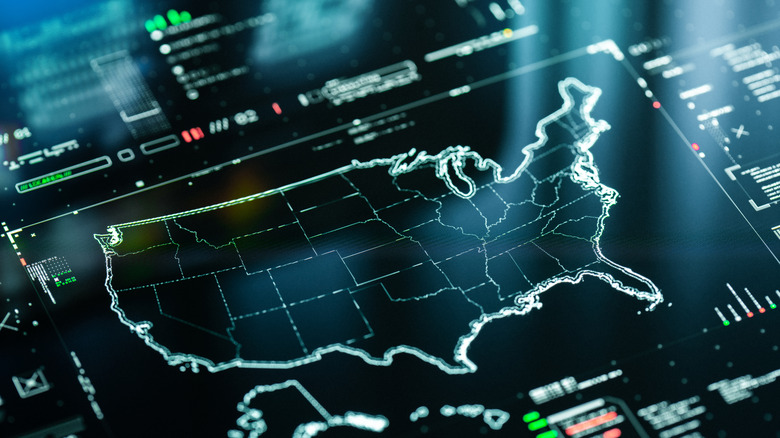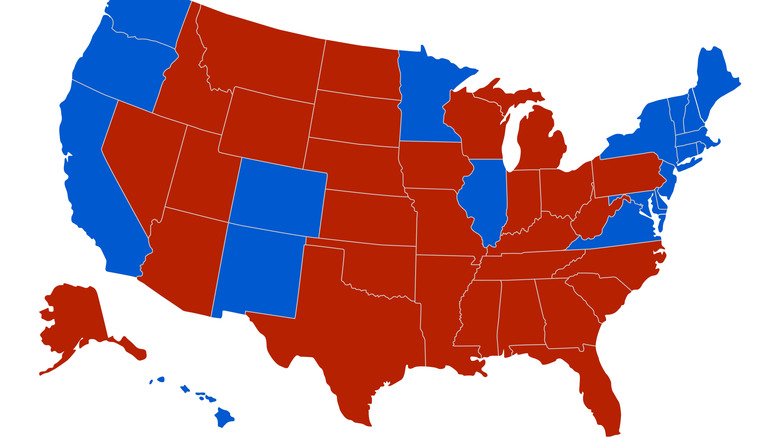The US State Where The Most People Are Struggling Financially
Using nine metrics, in July 2025, WalletHub scored all 50 states in order of its residents' financial distress — with higher scores meaning more problems. The No. 1 ranking ended up being the state that claims everything is bigger there: the Lone Star State of Texas. With a total score of 62.45, people there are struggling. Specific factors noted include how, on average in Q1 2025, Texans had the country's ninth-lowest credit scores, which suggests that residents aren't making all their debt payments on time and/or are racking up larger amounts of debt. Similarly, Texans have the third largest number of forbearance accounts — meaning that a lender is temporarily suspending payments on an account to help the person avoid foreclosure. However, with forbearance, interest typically tends to continue to accrue. Texas also has the seventh largest share of people with distressed accounts — meaning they are either in forbearance or otherwise with deferred payments — at 7.1%.
And the bad news keeps coming. When looking at personal bankruptcy filings, the number has skyrocketed by more than 22% since 2024. In fact, Texas ranks No. 6 when looking at increased bankruptcy rates among states. Despite having significant debts, Texans are also conducting more Google searches for "loans" and "debt" in startling numbers, suggesting that many of them want or feel they need to borrow more money.
Comparing financial distress in red states and blue states
Defining a state as red or blue based upon how people voted in the 2024 U.S. presidential election, the financial stress differences between the two is significant. Blue states collectively have the lower, more desirable score of 20.94 while red states scored 32.95. Bolstering this conclusion: only three states reached a score above the highly undesirable ranking of 60: Texas, Florida (at 61.52), and Louisiana (at 61.50).
Floridians possessed the seventh highest number of distressed accounts per person, which was the second biggest boost in the number of financially strained consumers. Year over year, this is an increase of almost 23%. Meanwhile, the state with the country's third lowest credit scores — with nearly 12% of residents having accounts in forbearance — is Louisiana. When looking just at these distressed accounts, this is the highest in the nation. Distressed accounts can be warning flags of impending foreclosures and/or bankruptcy filings, which can be difficult to financially recover from, let alone regain creditworthiness and buying power.
States in the least financial stress
On the other end of the spectrum, people in Hawaii are experiencing the least amount of financial turmoil. With an overall score of 19.99, residents had the second least amount of changes in their credit scores. Although the report didn't detail what those credit scores were, a credit score of 670 puts people in the "good" category and allows them to take advantage of better interest rates on loans and credit cards. The second-best state: Vermont with a score of 21.41. There's a numerical jump to the third best state of Alaska, which scored 29.24.
In a separate 2025 study by Lending Tree, one key financial factor is causing many of consumers' increased numbers of late payments: the buy now, pay later (BNPL) program. In August 2025, 54% of consumers said they'd made a late payment on a BNPL debt, with 41% of them doing so in the last year. That's up from 34% a year ago. Plus, 23% of people using BNPL programs are juggling three or more of these plans simultaneously. The most common purchases when using a BNPL plan include clothing, shoes, and accessories (41%); technology devices (39%); and home décor, furniture, or appliances (33%). Coming in at No. 4: groceries with 25% of people saying they've used the BNPL plan for these essentials.


